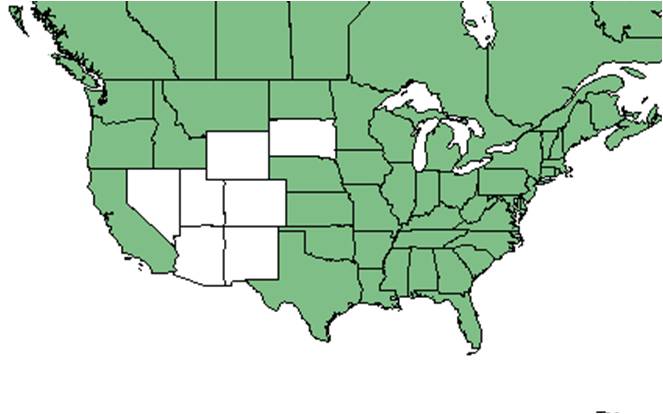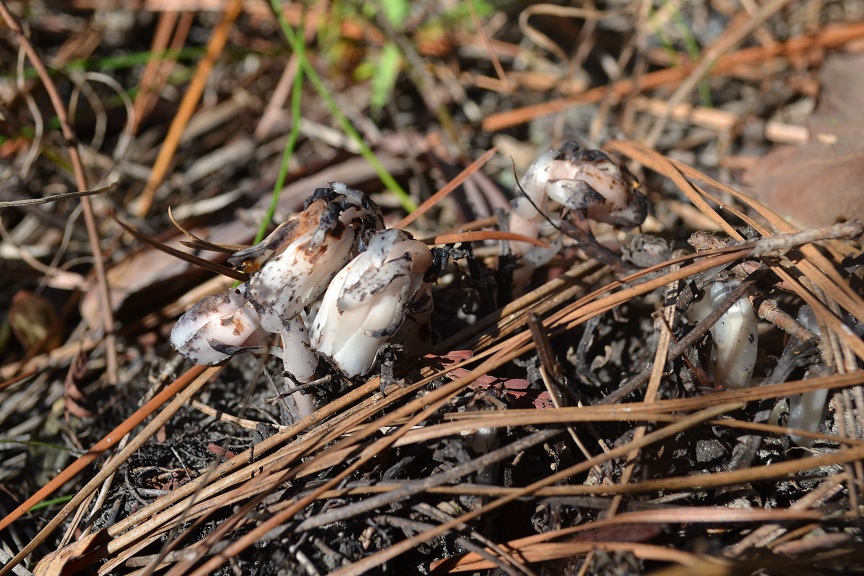Difference between revisions of "Monotropa uniflora"
Emmazeitler (talk | contribs) |
|||
| Line 46: | Line 46: | ||
<!--===Diseases and parasites===--> | <!--===Diseases and parasites===--> | ||
| − | ==Conservation and | + | ==Conservation, cultivation, and restoration== |
| − | == | + | ==Cultural use== |
==Photo Gallery== | ==Photo Gallery== | ||
<gallery widths=180px> | <gallery widths=180px> | ||
Revision as of 17:37, 8 June 2021
| Monotropa uniflora | |
|---|---|
Error creating thumbnail: Unable to save thumbnail to destination
| |
| Photo was taken by Gil Nelson | |
| Scientific classification | |
| Kingdom: | Plantae |
| Division: | Magnoliophyta - Flowering plants |
| Class: | Magnoliopsida – Dicotyledons |
| Order: | Ericales |
| Family: | Monotropaceae |
| Genus: | Monotropa |
| Species: | M. uniflora |
| Binomial name | |
| Monotropa uniflora L. | |

| |
| Natural range of Monotropa uniflora from USDA NRCS Plants Database. | |
Common name: Indian pipes[1]
Contents
Taxonomic notes
Synonyms: Monotropa brittonii Small.[1]
Varieties: none.[1]
Description
A description of Monotropa uniflora is provided in The Flora of North America.
M. unitropa has a glabrous stem and solitary flower, with white coloration when fresh and black as it ages.[1]
Distribution
This plant ranges from Labrador and Alaska, south to southern Florida, Texas, and California. There are disjunct populations in southern Mexico, Central America, South America, and eastern Asia.[1]
Ecology
Habitat
This species can be found in mixed woodlands, mesic bluffs, ravine edges, along swamps, pine scrub, and hardwood hammock edges.[2] Observed growing in shaded areas, M. uniflora occurs in moist and dry sand, sandy loam, and rich hummus.[2] It is also found in human discturbed habitats such as hiking trails, residential backyards, and front lawns.[2] Associates species include Carya, Magnolia, Quercus, Habernaria quinqueseta, Cypress, Burmannia biflora, Pinus clausa, Quercus myrtifolia, and Q. maritima.[2]
Phenology
This species flowers from June through October and fruits from August through November.[1]
Seed dispersal
This species is thought to be dispersed by gravity.[3]
Conservation, cultivation, and restoration
Cultural use
Photo Gallery
References and notes
- ↑ 1.0 1.1 1.2 1.3 1.4 1.5 Weakley, A.S. 2015. Flora of the southern and mid-atlantic states. Working Draft of 21 May 2015. University of North Carolina at Chapel Hill, Chapel Hill, North Carolina.
- ↑ 2.0 2.1 2.2 2.3 Florida State University Robert K. Godfrey Herbarium database. URL: http://herbarium.bio.fsu.edu. Last accessed: June 2014. Collectors: Loran C. Anderson, Herbert Kessler, Jacob Kimel, R.K. Godfrey, John B. Nelson, George R. Cooley, D. B. Ward, J. Beckner, Lovett E. Williams, Michael Castagna, Travis MacClendon, K. MacClendon, P. Howell, B. Thomas, G. Wilder, R. Komarek, Kathleen Brady, Ed Keppner, and Lisa Keppner. States and Counties: Florida: Bay, Calhoun, Gadsden, Hernando, Leon, Liberty, Marion, and Wakulla. Georgia: Grady.
- ↑ Kirkman, L. Katherine. Unpublished database of seed dispersal mode of plants found in Coastal Plain longleaf pine-grasslands of the Jones Ecological Research Center, Georgia.
